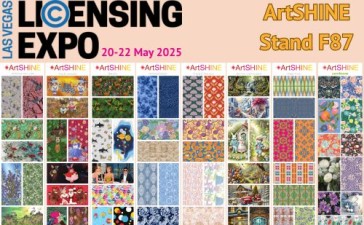Introduction: Art collection is a rewarding and enriching endeavor that allows individuals to express their creativity, showcase their personal taste, and support artists. However, for beginners, navigating the art world can be daunting. This comprehensive guide provides step-by-step instructions on how to start collecting art and collect like a pro.
Step 1: Define Your Taste and Preferences Before diving into the art world, take some time to define your taste and preferences. Explore different art styles, mediums, and genres to discover what resonates with you. Consider visiting art galleries, museums, and exhibitions to gain exposure to diverse artworks. Reflect on the emotions and reactions elicited by various pieces to identify your aesthetic preferences.
Step 2: Set a Budget Establishing a budget is essential for effective art collection. Determine how much you are willing to invest in art and set realistic financial boundaries. Consider factors such as the size of your collection, the cost of individual artworks, and potential additional expenses such as framing, shipping, and insurance. Remember to prioritize quality over quantity and allocate funds accordingly.
Step 3: Research Artists and Artworks Once you have defined your taste and set a budget, conduct thorough research on artists and artworks that align with your preferences. Explore reputable art galleries, online platforms, and auction houses to discover emerging and established artists. Familiarize yourself with the artists’ backgrounds, styles, and bodies of work. Pay attention to art market trends, auction results, and critical reviews to make informed decisions.
Step 4: Visit Art Exhibitions and Events Immerse yourself in the art world by attending art exhibitions, fairs, and events. These platforms provide opportunities to view a wide range of artworks, meet artists, and network with fellow collectors and art enthusiasts. Take advantage of guided tours, artist talks, and panel discussions to deepen your understanding of art and expand your knowledge base.
Step 5: Build Relationships with Art Professionals Developing relationships with art professionals, including gallerists, curators, and art advisors, can be invaluable for novice collectors. These individuals possess expertise and insights that can guide you in your art collecting journey. Seek advice, ask questions, and leverage their knowledge to make informed decisions. Building trust and rapport with art professionals can open doors to exclusive opportunities and access to coveted artworks.
Step 6: Start Small and Diversify Your Collection As a beginner collector, it is advisable to start small and gradually build your collection over time. Begin by acquiring affordable artworks from emerging artists or lesser-known galleries. Experiment with different mediums, styles, and genres to diversify your collection and broaden your artistic horizons. As you gain confidence and experience, you can gradually invest in more significant and high-profile pieces.
Step 7: Trust Your Instincts and Follow Your Passion While research and advice from art professionals are valuable, ultimately, trust your instincts and follow your passion when collecting art. Choose artworks that resonate with you on a personal and emotional level, regardless of market trends or investment potential. Authenticity and genuine connection are essential aspects of art collecting that transcend monetary considerations.
Step 8: Carefully Document and Preserve Your Collection Once you begin acquiring artworks, it is crucial to document and preserve your collection meticulously. Keep detailed records of each piece, including artist information, provenance, acquisition date, and purchase price. Invest in archival-quality framing and storage solutions to protect artworks from environmental factors such as light, humidity, and temperature fluctuations. Consider obtaining art insurance to safeguard your collection against unforeseen circumstances.
Step 9: Continuously Educate Yourself and Stay Informed Art collecting is a lifelong learning process that requires ongoing education and engagement. Stay informed about current art market trends, developments, and opportunities through books, publications, and online resources. Attend lectures, workshops, and seminars to expand your knowledge and network with fellow collectors. Embrace the dynamic and ever-evolving nature of the art world, and remain open to new ideas and perspectives.
Step 10: Share Your Passion and Enjoy Your Collection Finally, share your passion for art with others and enjoy the journey of collecting. Display your artworks in your home or workspace, and take pride in curating your personal art collection. Share your collection with friends, family, and fellow art enthusiasts, and engage in meaningful discussions about art and creativity. Remember that art collecting is not just about acquiring objects; it is about fostering connections, sparking conversations, and enriching your life through the power of art.
Want to learn more? We’re here to help you to take action, just like we’ve helped thousands of other entrepreneurs, business owners, and creative professionals all around the globe. Now is the time to let your passion SHINE. Now is the time to Make Tomorrow Today! To your success, Vinh Van Lam and Stuart Horrex Cofounders
ArtSHINE.com





